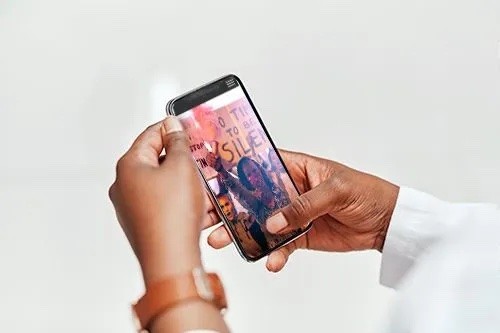Technology’s rapid advancement has revolutionized how we share ideas, build relationships, and access information. Social media has become a powerful force, transforming communication and access to information globally. Its mass distribution capabilities have reshaped modern life, influencing how we perceive, connect with, and participate in social justice and activism. This guide explores how to leverage the power of digital platforms for effective activism.
 Social media activism concept
Social media activism concept
The Synergy of Social Media and Activism
Social media has empowered individuals to communicate and collaborate in unprecedented ways. Platforms like Facebook, Twitter, Instagram, and TikTok offer features like feeds, profiles, and groups that provide global access to organizations. These organizations can then boost visibility, share information, and network with diverse groups.
The power of social media lies in its ability to amplify voices, disseminate information instantly, and foster collaboration across geographical boundaries. Let’s examine some impactful movements and trends that have gained momentum due to their strong social media presence.
Case Studies in Digital Activism
Several movements have demonstrated the power of social media to drive social change. Here are some notable examples:
- ALS Ice Bucket Challenge: In 2014, the ALS Association’s Ice Bucket Challenge raised awareness and $115 million for ALS (Amyotrophic Lateral Sclerosis) research. Participants dumped ice water on themselves or others, nominating others to do the same or donate to ALS research. The campaign’s success was driven by its low barrier to entry, entertainment value, and celebrity involvement.
- Arab Spring: The Arab Spring uprisings in the early 2010s saw young protesters utilize social media to organize, raise awareness about political issues, and document events on the ground. This showcased the importance of citizen journalism, documenting violence, and exercising freedom of speech, contributing to civic engagement. Studies highlight that social media acted as a megaphone, amplifying the message of the protests and bringing international attention to the issues.
- Black Lives Matter: The Black Lives Matter movement originated as an online community combating anti-Black racism and police violence. Through the #BlackLivesMatter hashtag and social media platforms, the community organized, mobilized, and increased its visibility. The hashtag gained significant traction, used nearly 30 million times on Twitter between July 2013 and May 2018, particularly during protests, national discussions, and in response to news affecting the Black community.
More Examples of Social Media Impact
- #LoveWins: Following the Supreme Court’s decision to legalize same-sex marriage in 2015, the Human Rights Campaign (HRC) leveraged the #LoveWins hashtag to celebrate the victory. The online campaign generated millions of impressions and tweets, with participation from celebrities and corporations, showcasing widespread support for marriage equality.
- #MeToo: The #MeToo movement provided a platform for survivors of sexual harassment and assault to share their stories and experiences. By sharing these experiences, the movement aimed to highlight the prevalence of sexual harassment and promote support for victims.
- Occupy Wall Street: Occupy Wall Street exemplified a grassroots political movement that relied on social media to foster collective participation. With no official leader, the movement utilized virtual and physical spaces, relying on social media’s ability to foster unified collective participation.
Leveraging Social Media for Social Justice
Social media can amplify voices, raise awareness, build relationships, and create a space for organizations, activists, and citizens to demand justice.
Effective Strategies for Digital Activism
Here are several ways to use social media for social justice:
- Coordinating Community Responses: Social media enables the creation of online spaces where people can connect, find support, and organize for collective action.
- Platforming Lived Experiences: Social media provides a platform to amplify the stories of minorities and underrepresented groups, raising awareness of issues like racial violence, sexual harassment, and other forms of oppression.
- Promoting and Planning Events: Social media can create awareness around social justice issues and empower communities to organize real-world events, such as protests, rallies, and educational events. Political activist groups like MoveOn utilize social media to plan and organize swift responses to real-world events.
Alt: Image from the 2019 Hong Kong protests, showcasing the use of social media by protesters to share information and images of the events.
- Sharing Pictures and Videos: Social media is an invaluable tool for documenting social movements. News outlets often rely on platforms like Twitter to find information and imagery of current events. The 2019 Hong Kong protests exemplified how protesters used social media to share pictures and videos, battling for public opinion on the pro-democracy movement.
- Signal Boosting: Signal boosting involves sharing a single message to amplify its reach. When done effectively, it can help content go viral and reach a much wider audience.
- Engaging the College Population: Young people, particularly college students, are active social media users. With their desire for “perspective-taking,” college campuses are ideal for reaching targeted audiences for social justice causes and movements.
Best Practices for Nonprofits and Activists
Nonprofits and social justice organizers can use social media to share narratives, disseminate information, and foster conversations. Building an audience can significantly benefit their mission.
- Fundraising: Social media fundraising campaigns can engage a diverse audience and focus attention on a specific goal. Utilizing calls-to-action and strategic planning can maximize fundraising efforts. Creating a funnel from awareness to engagement and then to conversions can ensure views translate into donations.
- Partnering with Influencers: Collaborating with social media influencers can amplify a message and reach target demographics. An influencer’s endorsement can boost public awareness and perception of a nonprofit’s cause.
- Promoting Events: Promoting events on social media can attract attention, invite followers, and potentially reach their networks. Platforms like Facebook can provide estimates of event attendance, aiding in preparation.
- Sharing Stories: Sharing compelling stories can showcase both the challenges and successes of a movement, encouraging continued support.
- Spreading Awareness: Social media platforms can be used to spread awareness of a mission, highlight needs, and educate audiences on critical issues.
Conclusion: The Future of Digital Activism
Social media has undeniably transformed activism, providing unprecedented opportunities to connect, organize, and amplify voices. By understanding how to effectively leverage these tools, individuals and organizations can drive meaningful social change in the digital age. As technology continues to evolve, the future of activism will be increasingly intertwined with the power of social media.
